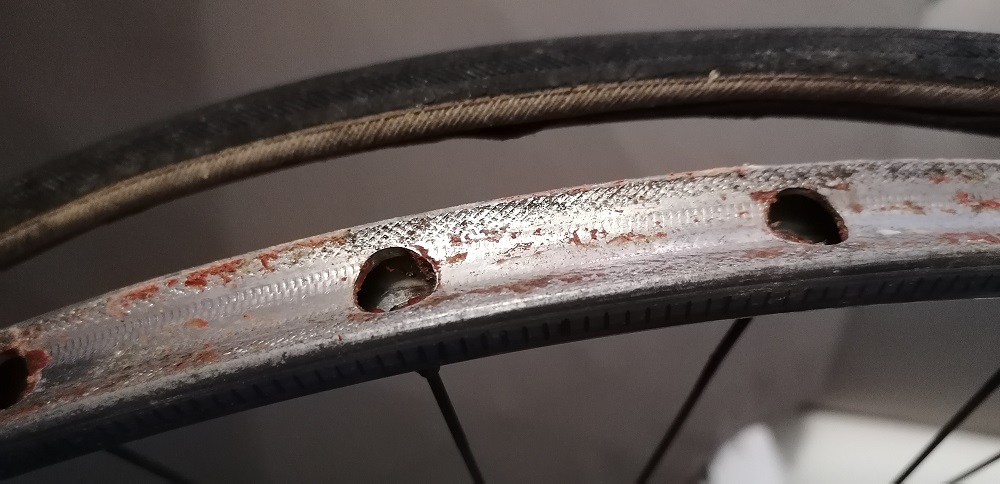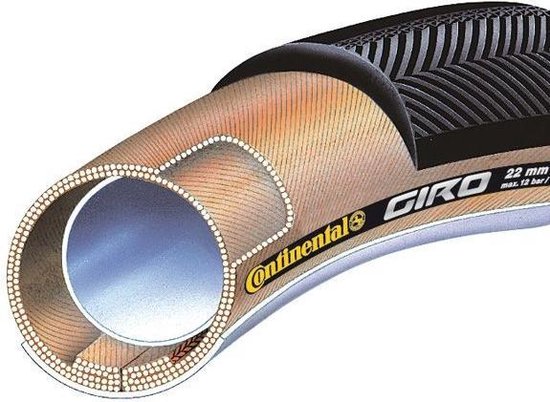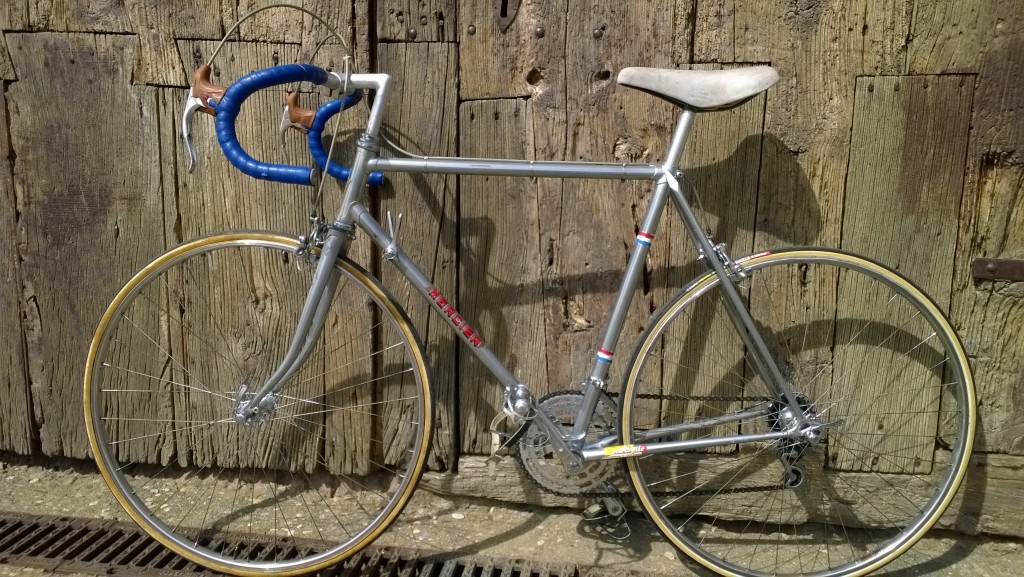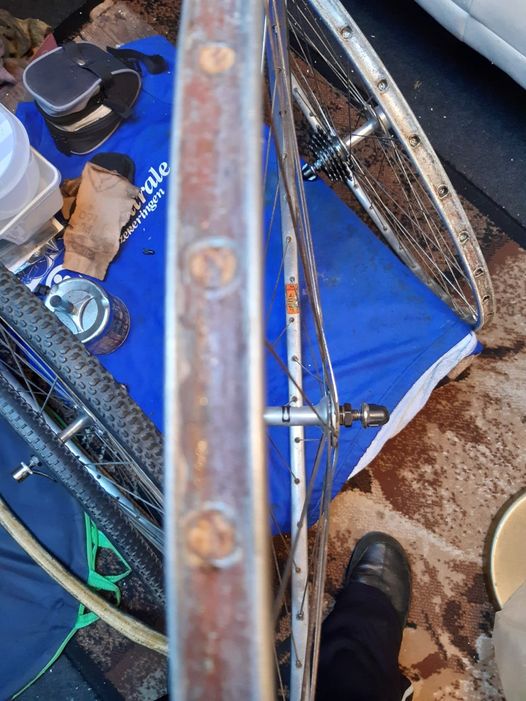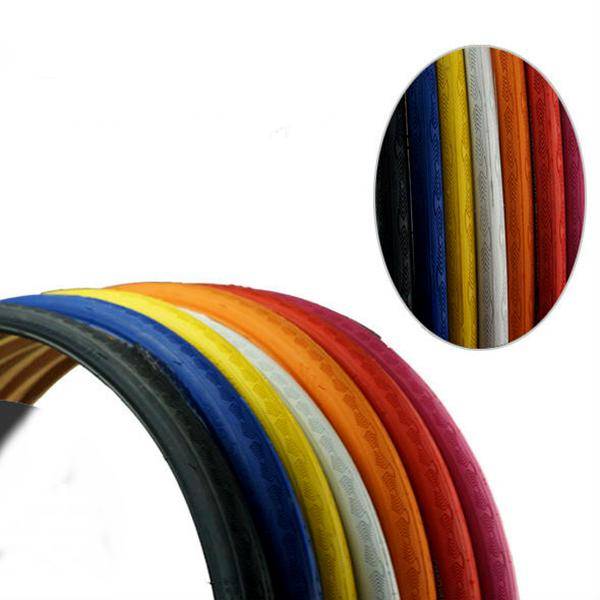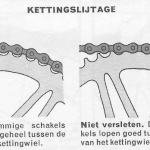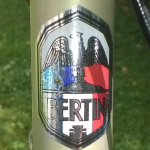I hear and read it now and then: someone with no experience buys a vintage racing bike and notices that when he has a flat tire, he does not ride on tires but on tubes and then the question comes up “what are tubes?”.
So there are indeed different types of tire systems. We stick to tubes and tires in this article. Tubeless tires are not discussed here because this system is part of modern cycling.
What's a tube?
A tube, from the English word tubular tire, is a tire system in which the inner tube is sewn into the tire. Tubes are completely round and provided with a fabric protective layer with which it is glued to the rim. The rim for a tube is different from the rim for tires, it seems as the flange is missing.
Tubes were especially popular until the 90s of the last century for the following reasons:
- A tube rim is lighter because it contains less material
- A tube was lighter than a tire. In recent years, bands have evolved a lot and this difference no longer exists
- A tube was firmer than a tire. This also no longer applies
- With a tube a higher air pressure can be applied (up to 12 bar)
- In case of a puncture (flat tire) there is more chance that the tube will hang on the rim.
Tubes are still popular today, but mainly among professional cyclists. They indicate that a tube rolls more easily and therefore they have a better road feeling. The main brands of tubes are: Vredestein, Continental, Schwalbe, Vittoria, Wolber and Michelin.
The price depends on the quality of the tubes and varies from € 20 to € 150. I usually use Vittoria tubes and more specifically the Vittoria Rally because they are very good in terms of price and quality and look the most classic with the cream colored sides. Most of the tubes available on the market now don't have the vintage style.
It is very important that you stick a tube well so that it is firmly attached to the rim. It wouldn't be the first time a tube would shoot off the rim when you make a turn or that the tube slide when you use your brakes. A tube is glued with a special liquid tube glue which is applied in several layers.
Sticking a tube is not that easy and is a time consuming process. We will discuss this in a subsequent article.
Every now and then a tube is sewn again when it has a leak. This is specialist work and a little skill is required, how this is done you can see here . If you have a puncture during your ride, you can still get one inflation and repair cartridge that not only closes the hole in your tube but also inflates the tube.
As mentioned above, tubes used to be the rule because they can withstand a higher tire pressure (up to 12 bar), among other things. This was especially applicable in track cycling. Because at such a high air pressure the spoke holes are a delicate place and a bumper was not always sufficient, these holes were sometimes filled with cork. Below you can see such an example (thanks to Marco Verbaant). This was, of course, a time consuming activity.
Tires
Tires are the most commonly used. The system consists of an inner tube that is protected in a tire. Nowadays you have the outer tires in all colors: black, white, yellow, red, green, orange. These are the more modern ones and might suit the trendy style you want to give your vintage bike.
If you want to give your vintage racing bike its authentic look back, you have to purchase the classic straps with the top black and the sides cream colored. These are a bit more difficult to find but you can still find them, for example:
- Continental Grand Prix Classic Road Bike,
- Michelin Dynamic Classic Road Bike,
- Vittoria Corsa,
- Schwalbe Lugano
- Vredestein Fortezza
You can buy an inner tube for a few euros by bol.com or decathlon. Here too, the more expensive the better the quality. Ditto for the tires.
When purchasing the inner tube, pay attention to the size of the tire size, you can check this on the side. If you drive with (high) aerodynamic rims, make sure that the valve is long enough, otherwise you will be on foot with a flat tire.
You can see how to replace an inner tube and apply a new rim tape in the article bicycle maintenance - inner tube replacement

